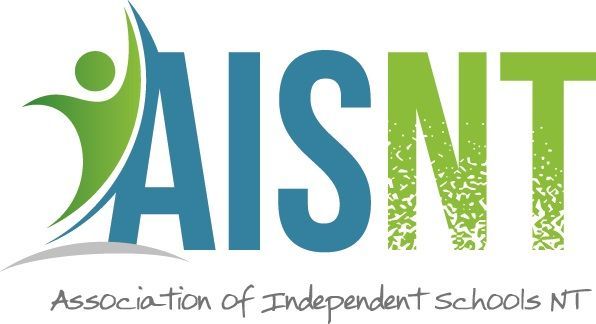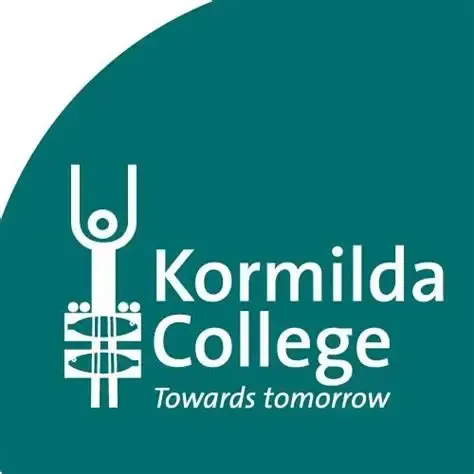The Passing of a Great Independent School Board Chair
Last Thursday Dr Charles Butcher, formerly the much-respected Head Surgeon at Alice Springs Hospital, passed away. He had been battling Parkinson’s for several years and eventually succumbed. Charles is notable as being one of the longest serving Board Chairs in AISNT. He spent several years on the St Philip’s Board before becoming its Chair in the mid-90s. He then Chaired the St Philip’s Board for 20 years and I had the pleasure of working with him for the entire time. It was during this time that the College undertook many major Building projects including the Hall, Sports Centre and Fred Mckay Education Centre to mention a few. It was also during this time that the College became a member of Round Square. He and his wife Laurel attended many International Conferences and he was awarded, in recognition of his dedication, an Honorary Membership.
I couldn’t have had a better Chair with whom to spend 20 years. Having left school at 15 to work on the family farm he decided after a number of years that he wanted to become a doctor. He went to correspondence school to gain his matriculation, then to Melbourne University eventually graduating third in his final year. Education was so important to him. After some time practicing as a doctor, including as a Flying Doctor, he went to Glasgow to train as a surgeon, eventually to serve the Alice community for many years. On retirement he was awarded an OAM and on retiring from the St Philip’s Board was made a Life Governor of the College, a position he filled, even when he was so sick, loyally and with dignity.
During his twenty years as Chair I met with him almost every week. I will always remember my Monday lunches with him and Laurel, a fixture held at a cafe in town to ensure we caught up. He understood the position of chair thoroughly, loyally attended all College functions, engaged thoughtfully with the many issues and was vitally interested in and knowledgeable about education. He was a great support of me as Head. An avid reader he would certainly stimulate my thinking with interesting ideas. He was indeed a true Education Champion, a humble but brilliant man a true example to all.
DIVERSITY IN TERRITORY EDUCATION
In AISNT there are many influences on the type of education offered in this vibrant school sector. Some follow educational philosophies rigorously, others adopt them as a useful influence. The Montessori philosophy is one such influence.
MONTESSORI EDUCATION
The founder of this approach to education was Maria Montessori, a great educator who was nominated for the Nobel Peace Prize in 1949, 1950 and 1951, though she didn’t win it. But this highlights her amazing reputation.
Maria was born in Chiaravalle Italy in 1870. Both her parents were educated and in 1875 the family moved to Rome. Maria’s original choice of career was to be an engineer, in those days a very unusual choice for a woman. By the end of secondary school, she wanted to be a doctor, though her parents wanted her to be a teacher.
Medicine was also a rare career for women but after some trouble she was accepted into the University of Rome as one of the first women to attend medical school in Italy. In 1896 she graduated as a doctor.
The following year she joined a research program at the psychiatric clinic of the University as a volunteer. This work initiated her deep interest in the needs of children with disabilities. She was then appointed co-director of a new institution, the Orthophrenic School. This was a “medico - pedagogical institute” for training teachers in educating children with an intellectual disability. Attached to this training facility was a laboratory classroom.
She was following her passion which was encouraging social reform, particularly emphasizing the role of gender and advocating powerfully for children. In 1907 she opened the first Casa dei Bambini or Children’s House and to this role she brought educational materials and ideas she had developed at the Orthophrenic School. This experimental school was located in a socially disadvantaged area where children suffered from deprivation and low expectations for their educational development. Maria, with her skills and her utmost belief that she could encourage positive outcomes with these children was able to transform their lives. “She provided them with the opportunities, tools and experiences that they needed to regain control of their lives and their futures”. (montessorichild.com.au)
The children’s environment was really important and a real focus for her. As a true scientist she believed in experimenting. Into the environment of the children she placed many different activities. She observed them with these activities and discarded those which failed to engage them. This indeed was a new approach to education. Instead of presenting material which was mandated and then having the task to convince the children this was good for them, the children were now to be significantly involved in choosing their learning. Maria recognized that children had the capacity to manage their own education. What was crucial was that the activities had to be designed to support their natural development.
Her ideas became noticed, and she offered training courses on her approach. In 1912 she published a book which made its way to the US. Her approach then really took off.
In 1917 she moved to Spain. By 1929 her son was working with her and together they established the Association Montessori Internationale to perpetuate her work.
In 1939 she was visiting India and war broke out. India was then British and being Italian (Italy was on the opposing side) she was interned there. In 1946 she was allowed to leave. During her time in India, she and her son Mario had trained over 1000 teachers in her method.
Her final public engagement was the 9th International Montessori Congress. In 1952, aged 81, she died having made an amazing contribution to education. .
STEINER SCHOOLS
AISNT is privileged to count two Steiner Schools amongst its number. But where and when did Steiner Education originate?
The founder of Steiner Education was Rudolf Steiner, a remarkable man, an original thinker who believed change was needed in education to cause change in society. He was multi-talented and had broad interests, was considered a social reformer, interested in medicine, science, architecture, agriculture and nutrition. He was also deeply concerned about the environment.
Rudolf Joseph Lorenz Steiner was born in Austria in 1861 in Kraljevic. He was educated at the Vienna University of Technology and went on to study at the University of Rostock in Germany which was its third oldest University. In 1894 he wrote his notable book, “The Philosophy of Freedom”. He moved to Berlin to lecture and study and came gradually to believe in spiritual perception independent of the senses. He called the result of this research “anthroposophy” and this became the basis of his educational philosophy. His belief was that humans once participated more fully in the spiritual processes of the world through a dreamlike consciousness but had since become restricted by materialism.
Sometimes there is confusion between the basis of Steiner and Montessori education. Simplistically Steiner education is teacher centred while Montessori is child centred.
Steiner formulated his philosophy of education in opposition to conventional German education practices of the early 20th Century. These focused on basic literacy, math’s, German history and religion. The system only allowed a small number of students to progress beyond eight years of elementary school. Contrastingly his schools were based on 12 years of education.
His approach had three key stages:
- Early Childhood. In this stage children were engaged in traditional life activities - baking, cleaning and gardening. They were able to cultivate feelings through the arts and stimulate creativity and fantasy through imaginative play.
- Second Stage, ages 7 - 12/13 this took into consideration the child’s need to learn through rhythm and images. Visual and dramatic arts, movement, music and foreign languages were studied. Reading began at 7.
- Third Stage, puberty to young adulthood. During this stage the aim was to develop student capacities for abstract thought, conceptual judgement, ethical thinking and social responsibility. It also focused on academia with teaches specialising in academic subject areas.
Emphasis was placed on his beliefs that humanity needs to work organically in cooperation with nature, not against it.
The first Steiner School was called the Waldorf School. It was sponsored by Emil Molt who was the owner of the Waldorf - Astoria factory. The school was set up in 1919 for the children of Molt’s employees and was free. There after Steiner schools were often known as Waldorf Schools. This first school really flourished and by 1938 schools based on his philosophy opened in Austria, Germany, Great Britain, Hungary, the Netherlands, Norway and the US. The schools right from the start have been co-educational.
Today over 1300 Steiner /Waldorf Schools and 2000 early childhood centres exist in over 60 countries. The Steiner Association writes: “Steiner education is known for providing a sound and practical basis for working with children, enabling them to find their creativity and become free individuals who can think for themselves, make their own judgements and find their own purpose and direction in life.”
Rudolf Steiner died on March 30 1925 in Dornach Switzerland. He was a great contributor to educational innovation and change.
Written by Chris Tudor,
Principal Liaison & AISNT Historian



